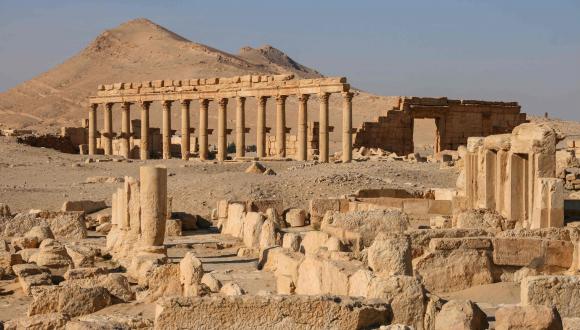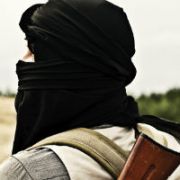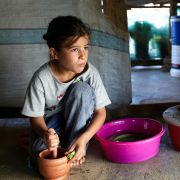Keeping the Pieces, But Changing the Board
 On May 13, 2015, U.S President Barack Obama gave his first interview to an Arabic-language newspaper, Asharq al-Awsat. There, he expressed his hope that a unified Iraq would be governed in a more inclusive manner, and applauded the recent advances of Iraqi forces against the State of the Islamic Caliphate (also known as ISIS, ISIL, or the IS). [1] His statements were clearly meant to reassure worried Sunni leaders. Yet they do not reflect the current confused reality of the Middle East. Perhaps this is because of domestic concerns; too much American blood, treasure, and prestige have been invested in the Iraqi project for an American president to readily admit failure. Alternatively, it has been argued that the United States is not fundamentally to blame for what is now occurring, and American action might worsen matters. [2] It may also be a combination of factors. Our argument is that the United States, and the West as a whole, has yet to correctly identify the problem. It continues to behave as though the Islamic State is merely another version of al-Qaʿida, and has not internalized the transformative regional impact of the IS ethos of ‘kasr al-hudud’ [shattering the borders].
On May 13, 2015, U.S President Barack Obama gave his first interview to an Arabic-language newspaper, Asharq al-Awsat. There, he expressed his hope that a unified Iraq would be governed in a more inclusive manner, and applauded the recent advances of Iraqi forces against the State of the Islamic Caliphate (also known as ISIS, ISIL, or the IS). [1] His statements were clearly meant to reassure worried Sunni leaders. Yet they do not reflect the current confused reality of the Middle East. Perhaps this is because of domestic concerns; too much American blood, treasure, and prestige have been invested in the Iraqi project for an American president to readily admit failure. Alternatively, it has been argued that the United States is not fundamentally to blame for what is now occurring, and American action might worsen matters. [2] It may also be a combination of factors. Our argument is that the United States, and the West as a whole, has yet to correctly identify the problem. It continues to behave as though the Islamic State is merely another version of al-Qaʿida, and has not internalized the transformative regional impact of the IS ethos of ‘kasr al-hudud’ [shattering the borders].
Origins
The significance of Saddam Husayn’s 2003 ouster cannot be overstated, because it resulted in the first modern instance of a Shiʿi community coming to power in an Arab country. Prime Minister Nuri al-Maliki’s government consolidated Shiʿi power and, in so doing, marginalized Iraq’s Sunnis, especially in the tribal areas of al-Anbar province. Sunni alienation was compounded by the program of de-Baʿthification, begun in 2003 under the Americans and intensified by al-Maliki’s government, which effectively treated virtually all Sunnis as enemies of the state. Therefore, concomitant with the 2008-2011 American withdrawal from Iraq, al-Qaʿida in Iraq (AQI) found ample support among the country’s malcontented Sunnis. Meanwhile, the autonomous Kurdish Regional Government (KRG) found itself at odds with the central government in Baghdad, over the allocation of oil revenues, among other things. [3] In practice, Iraq had split into three parts, presaging the 2011 disintegration of Syria along sectarian fault lines.
Though the so-called ‘moderate’ Syrian opposition gamely carried on, it was soon eclipsed by the radical Sunni takfiri groups, Jabhat al-Nusra and the IS. [4] By 2013, the latter had conquered vast swathes of eastern Syria, and established a ‘capital’ in the city of Raqqa. In June 2014, the IS launched an offensive from Syria into western Iraq, eliminating the political boundary between the two states. This gave credence to the declaration by the IS’s leader and self-proclaimed Caliph Abu Bakr al-Baghdadi that Sykes-Picot was a dead letter. [5] The group’s advance shocked the world with its vicious attacks on heterodox groups and with its high-profile executions of captured foreign hostages. At the same time, the group courted Sunni tribes through a conscious appeal to local customs and sentiment. [6]
Erasing the Borders
The Islamic State epitomizes a strange sort of hybrid; it is a state-like entity that argues against the validity of such so-called ‘Western’ constructions. This is the first time that a takfiri [7] group has had to deal with the more mundane aspects of governance. On the one hand, by declaring a Caliphate it has done what even al-Qaʿida has not; their reported issuance of passports and birth certificates makes for powerful propaganda. [8] On the other, ISIS recalls the so-called ‘Islamic golden age,’ and appeals to an individual’s [Sunni] Muslim primordial identity, while arguing that any other types of identity, from nationality to race, are immaterial. They have become masters at using seventh century tropes to attract a twenty-first century audience, using the modern tools of social media, as well as brute force and terror. For these reasons, it has been remarkably successful in attracting recruits in the West. [9] Social media plays a central role in the dissemination of jihadi ideology. The perpetrators of the May 2015 attack in Garland, Texas, had allegedly communicated via Twitter with Islamic State militants. [10] It is less important whether the IS actually gave the order, or merely served as an inspiration. While ideas have always passed freely across borders in the Middle East, social media has exponentially increased the scale and speed with which they now do so.
The IS has caused its regional rivals to assimilate the concept of kasr al-hudud, even as they claim to fight against it. The Lebanese Shiʿi Hizballah is deployed in large numbers in Syria and, in practice, wields exclusive power in some areas. [11] Looked at in a certain light, Iran is at once a supposed advocate for Iraqi ‘unity’ (presumably under its suzerainty) but at the same time blurs the boundaries between itself and its Arab neighbor. To this end, Iran has for some time been accused of pursuing a policy of “managed chaos” in Iraq, [12] equating Iraqi security with its own, and emphasizing the profundity of the two countries’ ties. [13]
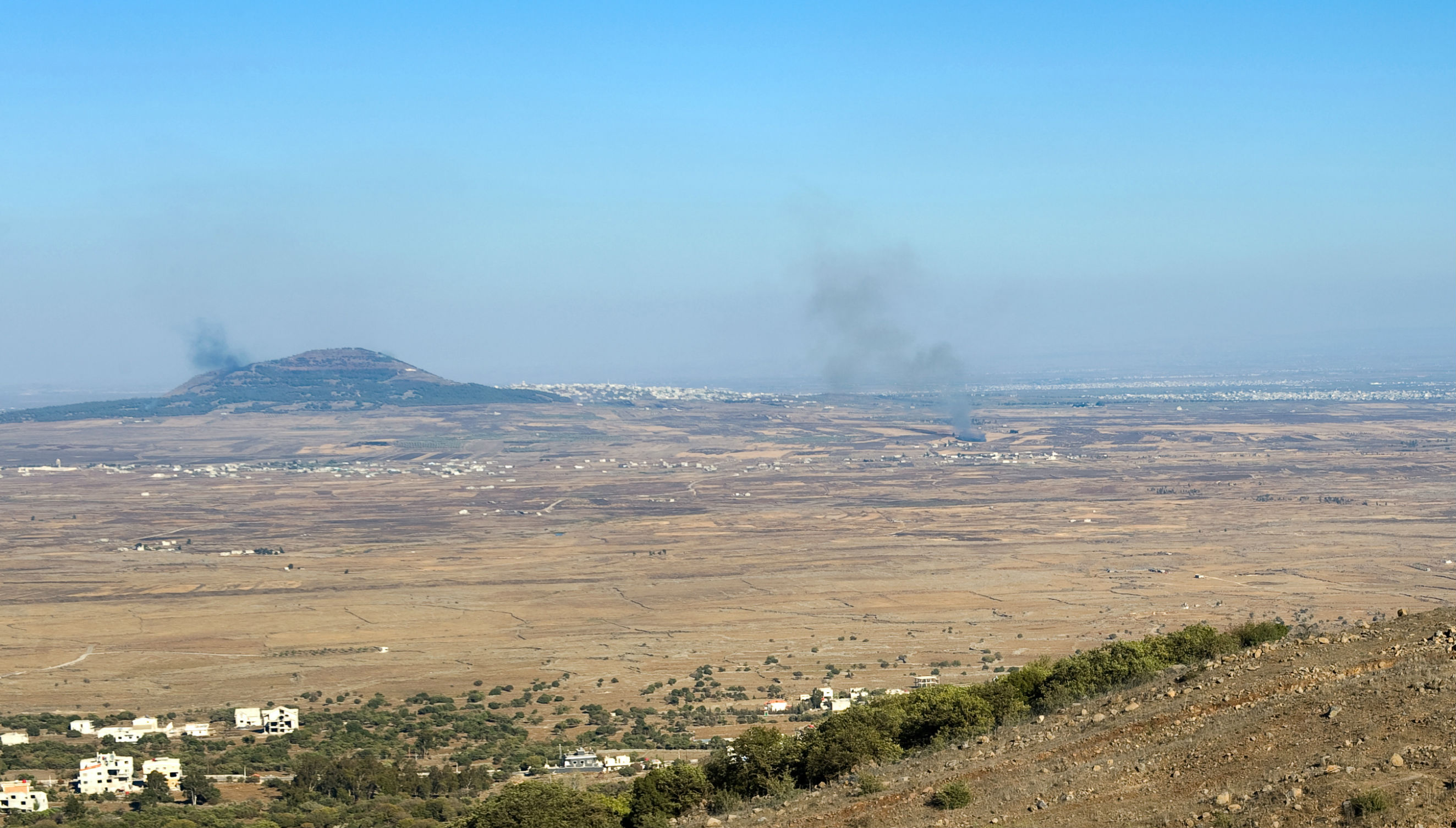
The Islamic State has also caused unprecedented demonstrations of Kurdish national unity. In 2012, Syrian Kurds began to pursue their own autonomy in the area they call Rojava, along the model of the KRG in Iraq. Following the IS siege of Kobani, the KRG dispatched peshmerga fighters to defend the city, despite considerable rivalry between the two groups. [14]
In an important way, the IS has also caused the erosion of Jordan’s borders. As of May 2015, at least 628,160 Syrian refugees [15] have been added to the approximately two million registered Palestinian refugees and the tens of thousands of registered Iraqis. [16] The influx of cheap Syrian labor has displaced around thirty percent of the unskilled Jordanian workforce, and has exacerbated an already problematic economic situation in the resource-poor country. Tensions have simmered in areas that have suffered high unemployment rates, such as the city of Ma’an. The city is largely tribal, and some of its residents have either joined the Islamic State or shown overt support for it. Forceful action by Jordanian security forces against suspected militants only triggered greater protests. Though these too were suppressed, that they are happening at all is a source of serious concern for Jordan. [17] The Hashemite Kingdom is at once an important participant in the anti-IS coalition, and an important source of IS manpower. [18] Other voices are being added to that of the Jordanian Salafi leader Mohammad al-Shalabi [Abu Sayyaf], who called Jordanian participation in US-led airstrikes against the IS the “beginning of the end” for the Hashemite monarchy. [19] It seems that King ʿAbdullah’s aggressive response to the burning of the captured Jordanian pilot in January 2015 is having progressively diminishing returns. [20]
A Tale of Two Cities
In May 2015, the IS conquered two cities on the opposite frontiers of its sphere of control. Both instances have been remarked upon for different reasons. The fall of Ramadi has revealed how hopelessly inadequate the American-trained Iraqi security forces are shaping up to be, and the response of Iraqi Prime Minister Haider al-ʿAbadi to dispatch Iranian-sponsored Shiʿi militias has fed damning accusations that ʿAbadi, like his predecessor, is first and foremost a Shiʿi leader. [21] Meanwhile, much Western attention has been focused on the ancient ruins of Palmyra, raising fears that the IS might destroy the priceless antiquities there, not to mention the fact that it is the first city that the IS has taken directly from the Syrian regime.
Yet the two events are linked. Although the IS has made a point of announcing that they now control half of Syria, and much of Iraq’s al-Anbar province, ruling the desert is not enough. The IS must also govern the urban centers where the majority of civilians live. [22] Cities provide the strategic, material, and ideological depth without which the organization cannot survive. Thus, the IS has cultivated an image as Sunni liberator, repairing infrastructure, and distributing bread and fuel, while emphasizing the unity of its territory. In Palmyra and Ramadi, the IS has largely limited its executions to captured soldiers and civil servants. [23] This relative restraint has left no one under the illusion that failure to comply with the IS’s directives will be left unpunished. [24] It wraps its iron fist in a velvet glove, offering both bullets and bread.
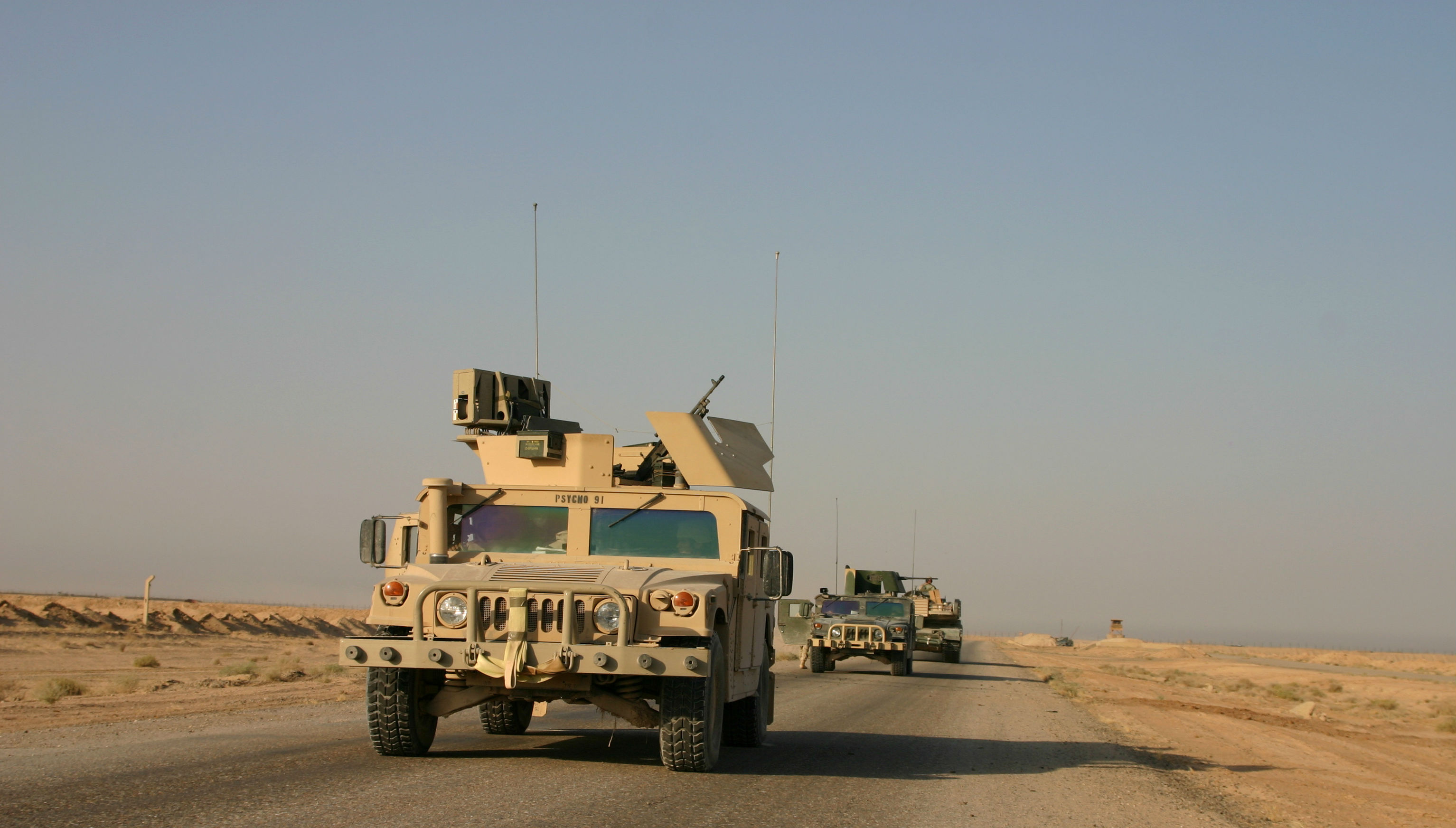
Misreading the New Middle East
Clearly, the current situation is troublesome. But so are the ‘solutions’ under consideration. On May 5, 2015, President Obama assured KRG President Masoud Barzani that that the United States “remained committed to a unified, federal, and democratic Iraq.” Yet, as the Kurdish writer Yerevan Saeed has pointed out, practically no one in Iraq supports such a goal. [25] Barzani, for his part, announced in an earlier statement that Kurdish independence was only a matter of time. [26]
The United States is desperately clinging to the old regional framework, and ignoring all signs that the strategy of throwing good money after bad is simply not working. This is not to discount the discomfort of its predicament; Washington opposes the Islamic State’s enemy in Syria, but supports the IS’s enemy in Iraq. The American government also has significant domestic considerations, to which we have previously alluded. The fact that the Islamic State also opposes other Islamist groups such as Hamas and Jabhat al-Nusra confuses matters; the IS does not neatly fit into a friend-or-foe dichotomy. Indeed, the very existence of the Islamic State nullifies the raison d’etre of other jihadist groups. It seems that the pace of reality has outstripped the ability of many to comprehend it.
At bottom, the IS has contributed to, and taken advantage of, the fragmenting of the Syrian and Iraqi states, and eliminated their common boundary established after World War I by the Great Powers. Palmyra and Ramadi are not two separate battlefronts. The Islamic State is not al-Qaʿida; it cannot be dealt with through military force alone. And, above all, we must recognize the danger inherent in the American policy confusion. It has been said that President Obama plays “chess while others are playing checkers.” [27] We propose an alternative metaphor. Obama is playing checkers, and the Islamic State backgammon. The pieces may look the same, but the board is entirely different.
As originally published in TEL AVIV NOTES.
Uzi Rabi is the Director of the Moshe Dayan Center for Middle Eastern and African Studies (MDC) and a Senior Research Fellow at the Alliance Center for Iranian Studies, Tel Aviv University.
Ben Mendales is Coeditor of the Middle East News Brief at the Moshe Dayan Center for Middle East and African Studies (MDC), Tel Aviv University.
[1] Mina al-Oribi, Al-Sharq al-Awsat, May 12, 2015.
[2] Both proponents and detractors of American involvement in Iraq have evoked the apocryphal ‘Pottery Barn [“you break it, you buy it”] Rule’ to argue that America, as the cause of Iraq’s dysfunction, would therefore be required to repair it. See, for example, John Feffer, “Iraq: Revisiting the Pottery Barn Rule,” The Nation, January 27, 2014. For a viewpoint of one who does not believe that America is to blame (and therefore the ‘Rule’ is presumably inapplicable), see Phillip Gordon, “The Middle East is Falling Apart,” Politico, June 4, 2015.
[3] Mark Wilbanks and Efraim Karsh, “How the ‘Sons of Iraq’ Stabilized Iraq,” Middle East Quarterly 17, no. 2 (2010): 57-70; Timothy Williams and Duraid Adnan, “Sunnis in Iraq Allied With US Rejoin Rebels,” New York Times, October 16, 2010; Serena Chaudhry, “Feeling Marginalized, Some Sunnis Seek Autonomy,” Reuters, January 1, 2012; “A Tortuous Triangle,” The Economist, December 22, 2012.
[4] ISIS began as essentially a ‘rebranding’ of the al-Qaʿida in Iraq (AQI) organization, following its entrance into the Syrian Civil War. Jabhat al-Nusra originated out of the AQI organization, but is now an independent group.
[5] The Sykes-Picot agreement formed the basis for the post-World War I division of ex-Ottoman lands in the Fertile Crescent and the Levant into separate entities. Mark Tran and Matthew Weaver, "Isis Announces Islamic Caliphate in Area Straddling Iraq and Syria," The Guardian, June 30, 2014; “The End of Sykes-Picot,” Al-Hayat.
[6] “Halab Tribal Assemblies,” Dabiq 1 (2014): 12-14.
[7] The term takfir refers to the action of declaring others unbelievers (kafir). A takfiri is a Muslim who accuses another Muslim of apostasy.
[8] “First Islamic State Birth Certificate: Guns and Grenade,” The Clarion Project, April 28, 2015, http://www.clarionproject.org/news/first-islamic-state-birth-certificate-report.
[9] For a detailed discussion on ISIS’s extensive use of social media, please see, for example, J.M. Berger and Jonathon Morgan, “The ISIS Twitter Census: Defining and describing the population of ISIS supporters on Twitter,” Brookings Project on U.S Relations with the Islamic World no. 20 (March 2015); Linda Dayan, “ISIS Social Media and the Case of Tumblr,” Beehive 3, no. 1 (January 2015); James P. Farwell, “How ISIS Uses Social Media,” Politics and Strategy, October 2, 2014. For a specific discussion on ISIS recruitment in the West, please see Edith Lederer, “UN Report: More than 25,000 Foreigners Fight With ISIS,” Associated Press, April 1, 2015; Anne Barnard and Eric Schmitt, “As Foreign Fighters Flood Syria, Fears of A New Extremist Haven,” New York Times, August 8, 2013.
[10] Scott Shane, “Texas Attacker Left Trail of Extremist Ideas on Twitter,” New York Times, May 5, 2015.
[11] Anne Barnard, “Hezbollah Deploys Weapon, a Press Tour, on the Syrian Front,” New York Times, May 16, 2015.
[12] Mark Tran, “Manageable Chaos in Iraq Suits Iran,” The Guardian, April 10, 2008.
[13] “Iran’s Rouhani Slams US Plot to Break Up Iraq,” Tasnim News, May 13, 2015; Iraqi PM Underlines Further Consolidation of Ties with Iran, Fars News, March 24, 2015.
[14] Joe Parkinson, “Growing Kurdish Unity Helps West, Worries Turkey,” Wall Street Journal, October 22, 2014; Bashdar Pusho Ismaeel, "Is it Time for Rojava and Kurdistan Region to Unite Against Common Enemy?" Rudaw, July 27, 2014; Ofra Bengio, “The Islamic State: A Catalyst for Kurdish Nation-Building,” Tel Aviv Notes 8, no.18 (October 2014).
[15] The estimate is conservative, primarily because it includes only those refugees registered with UNCHR. What it does mean, however, is that roughly one in ten persons in Jordan is, in fact, Syrian. See “Syria Regional Refugee Response,” Inter-agency Information Sharing Portal, UNHCR, [last updated May 28, 2015]; “External Statistical Report on Active Registered Syrians, “UNHCR, May 2, 2015.
[16] This number does not count the approximately ten thousand Palestinian refugees from Syria who have sought assistance in Jordan. See “Where we work,” UNRWA. See also, “Jordan UNHCR Operational Update,” UNHCR (April 2015).
[17] Zvi Bar’el, “King Abdullah Struggles To Keep a Lid on Jordan,” Haaretz, May 23, 2015; "In Jordan's Southern City of Ma'an, An MP's Resignation Was Very Welcome, This Is Why," al-Bawaba, May 19, 2015.
[18] In fact, the former leader of AQI, Abu Musab al-Zarqawi, derived his nom de guerre from the name of his Jordanian hometown. See Ben Hubbard, “In Jordanian Town, Syrian War Inspires Jihadist Dreams,” New York Times, April 12, 2014.
[19] Urdun Al-Akhbariya, September 23, 2014.
[20] Among other moves, King ʿAbdullah addressed the nation dressed in flight-gear, angrily quoted to American interlocutors from the Clint Eastwood movie, Unforgiven, and ordered the execution of two convicted terrorists. See “Jordan King Cites Clint Eastwood In Revenge Vow,” Al-Arabiya, February 5, 2015; “Jordan Executes Convicted Jihadists After Pilot’s Death,” BBC News, February 4, 2015; Maria Abi-Habib and Suha Ma-ayheh, “Jordanian Opposition to Fight Against Islamic State Grows More Vocal,” Wall Street Journal, February 2, 2015.
[21] In truth, sectarian considerations are present at every level of the Iraqi government’s decision-making; a plan to arm and train Sunni tribes on a larger scale for the current fight in al-Anbar was shelved because of opposition by Shi’i leaders. See Tim Arago, “Key Iraqi City Falls to Isis as Last of Security Forces Flee,” New York Times, May 17, 2015; “Iraq’s Ramadi falls to ISIS after army deserts city,” Al Arabiya, May 17, 2015.
[22] Sally Hayden, “Islamic State Now Controls 50 Percent of Syria After Seizing Palmyra,” Vice News, May 21, 2015.
[23] This is not to say that this restraint has been complete; hundreds of civilians were reportedly killed, some because their shops were adorned with the two-star Syrian flag. See Robert Fisk, “Isis Slaughter in the Sacred Syrian city of Palmyra: The Survivors' Stories,” The Independent, 5 June 2015.
[24] Aaron Zelin, “The Islamic State of Iraq and Syria Has a Consumer Protection Office,” The Atlantic, June 13, 2014; Anne Barnard and Hwaida Saad, “ISIS Alternates Stick and Carrot to Control Palmyra,” New York Times, May 28, 2015; “Islamic State settles into Ramadi, but the lull unlikely to last,” Reuters, May 29, 2015.
[25] Yerevan Saeed, “Time to Rethink US Policy in Iraq,” Rudaw, May 26, 2015.
[26] “Obama, Biden Tell Kurdish Leader US Stands By Unified Iraq,” Associated Press, May 5, 2015; Diyar Aziz, "Barzani: Kurdistan Independence Will Come," Basnews, May 7, 2015.
[27] Charles M. Blow, “It’s a Mad, Mad, Mad, Mad World,” New York Times, September 11, 2013.
 TEL AVIV NOTES is an analytical update on current affairs in the Middle East, published by Tel Aviv University's Moshe Dayan Center for Middle Eastern and African Studies, with the support of the V. Sorell Foundation.
TEL AVIV NOTES is an analytical update on current affairs in the Middle East, published by Tel Aviv University's Moshe Dayan Center for Middle Eastern and African Studies, with the support of the V. Sorell Foundation.


